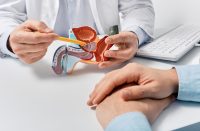Scoliosis is a condition where the spine, which typically takes the form of a straight line, curves to form an S or a C shape. Its manifestation can be mild, moderate, or severe. Curves less than 20 degrees are considered mild, and most cases of scoliosis belong to this category. Moderate curves have an angle of between 25 and 40 degrees, while curves of more than 50 degrees are considered severe. Scoliosis is often detected by screening schoolchildren, and the condition affects people of all races.
One of the main problems this condition causes is back pain, and many treatments for scoliosis aim to offer pain relief. Breathing issues, lung and heart damage, and nerve damage are also complications that scoliosis treatments aim to avert and address.
Scoliosis in Singapore
In Singapore, scoliosis is more common among girls than boys at a ratio of 7 to 1. About 1.4 per cent of schoolgirls aged 11 and 12 years old have the condition, and the figure goes up to 2.2 per cent for schoolgirls aged 13 and 14 years old.
Aside from an X-ray that reveals the curvature of the spine, scoliosis has a number of tell-tale signs. Depending on the severity of the condition, a person can have an S-shaped curve in the back when standing, and this can be more apparent when the person is observed from the front or back. In addition, a person with scoliosis can also have uneven shoulders, rib cages, hips, or waist. Often, the condition is confirmed after a physical examination, an x-ray, a spinal radiograph, or an MRI.
The Types of Scoliosis
Aside from the severity of the condition, scoliosis can also be categorised in other ways, such as its cause. Some of the most common types are idiopathic, congenital, neuromuscular, and degenerative scoliosis. It’s worth taking a closer look at each type.
• Congenital Scoliosis. In congenital scoliosis, the curvature of the spine is caused by a misshapen vertebra. It’s a condition that can be detected in infancy, but in most cases, it remains undetected until childhood.
• Idiopathic Scoliosis. This type of scoliosis often starts to develop at the onset of adolescence, and its cause remains unknown. Growth spurts can worsen the curve, so a child with this type of scoliosis who still has much room for growth needs to be monitored to keep the condition in check.
• Neuromuscular Scoliosis. A person with existing neuromuscular conditions, such as muscular dystrophy, spina bifida, and cerebral palsy, has a higher risk of eventually developing scoliosis. A scoliosis brace can be worn by the person to slow down the progression of the condition.
• Degenerative Scoliosis. Occurring later in life, degenerative scoliosis can be caused by arthritis or the degeneration of the disks that separate each vertebra.
Take note that scoliosis is not caused by poor posture, the lack of calcium in one’s diet, sports or physical activities, or lifting heavy objects. About 80 per cent of scoliosis cases are idiopathic, meaning that the cause of the condition is not known.
Treatment Options for Scoliosis
There are many factors that should be considered before a team of experts can arrive at a proper treatment for a particular case of scoliosis. The same goes for determining if a case of scoliosiseven needs treatment at all. These factors include the age of the patient, the severity of the curve, and the risk of progression, among others.
Mild cases of scoliosis often do not require treatment, and only about 1 per cent of those who have the condition will need medical attention. Those that do are often recommended to undergo the following modes of treatment:
• Bracing. Bracing is often recommended for patients who are still growing and those who have moderate curvature to prevent scoliosis from progressing. Most scoliosis braces are made of plastic, but there are also those that make use of a cotton vest and bands. While these implements are often worn 24 hours a day, they should not get in the way of everyday activities.
• Surgery. Patients with severe scoliosis can be considered for surgery to correct the curvature of their spine and prevent it from worsening. Depending on their condition, they might be recommended to undergo spinal fusion wherein the vertebrae are connected so that they can’t move independently of each other. An expanding rod can also be used for a young patient whose condition is rapidly progressing. Finally, there’s vertebral body tethering, a procedure where a flexible cord is attached to the spine and tightened, straightening the spine.
Adults who may be suffering from back pain due to scoliosis may be instructed to do the following by their physicians:
• Do Regular Exercise. Strengthening one’s back can help reduce pain, while losing weight can help reduce strain on the back.
• Take Pain Killers. Taking painkillers can help make the pain associated with scoliosis more manageable.
• Get Spinal Injections. In case the condition is causing nerve issues, the patient can be administered steroid injections or a local anaesthetic.
In case the remedies above fail to address the issue, then the patient’s case might be considered for bracing or surgery.
There is no way to prevent scoliosis, but there are effective means of managing this condition and keeping it from progressing. If you have questions or concerns about your spine or scoliosis, talk to a physician to determine whether you have the condition and what the best course of action would be for your particular case.




![20250626-NUHS-CTS5094-PRESS | SUPERADRIANME.com [From left] Dr Chong Kok Wee, Head and Senior Consultant, Allergy Service, Department of Paediatrics, KK Women’s and Children’s Hospital, A/Prof Elizabeth Tham, Head & Senior Consultant, Division of Paediatric Allergy, Immunology & Rheumatology, Khoo Teck Puat – National University Children's Medical Institute (KTP-NUCMI), National University Hospital (NUH), Dr Abiramy D/O Anathan, Clinician Lead, Paediatrics, National University Polyclinics and Prof Lee Yung Seng, Head, KTP-NUCMI, NUH.](https://media.superadrianme.com/wp-content/uploads/2025/06/27151231/20250626_NUHS_CTS5094_PRESS-2-200x131.jpg)
